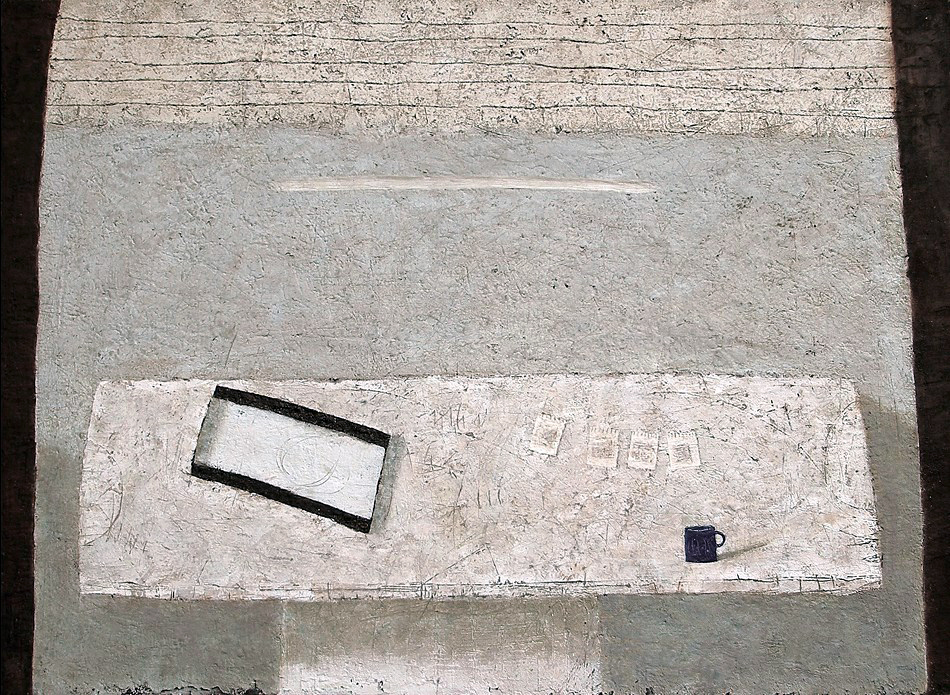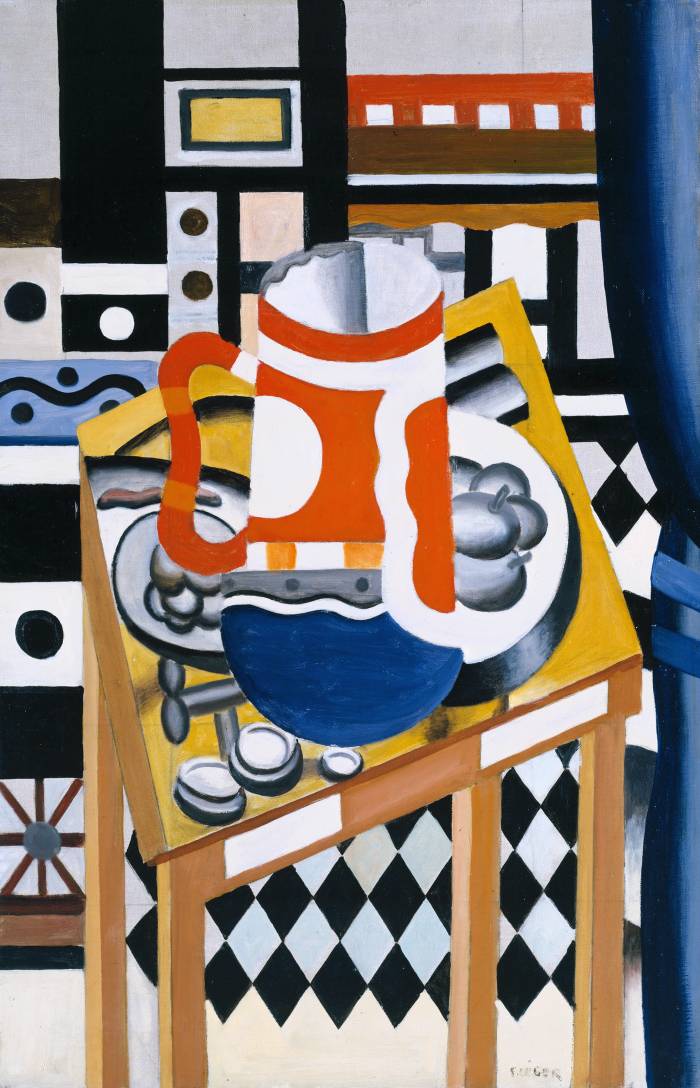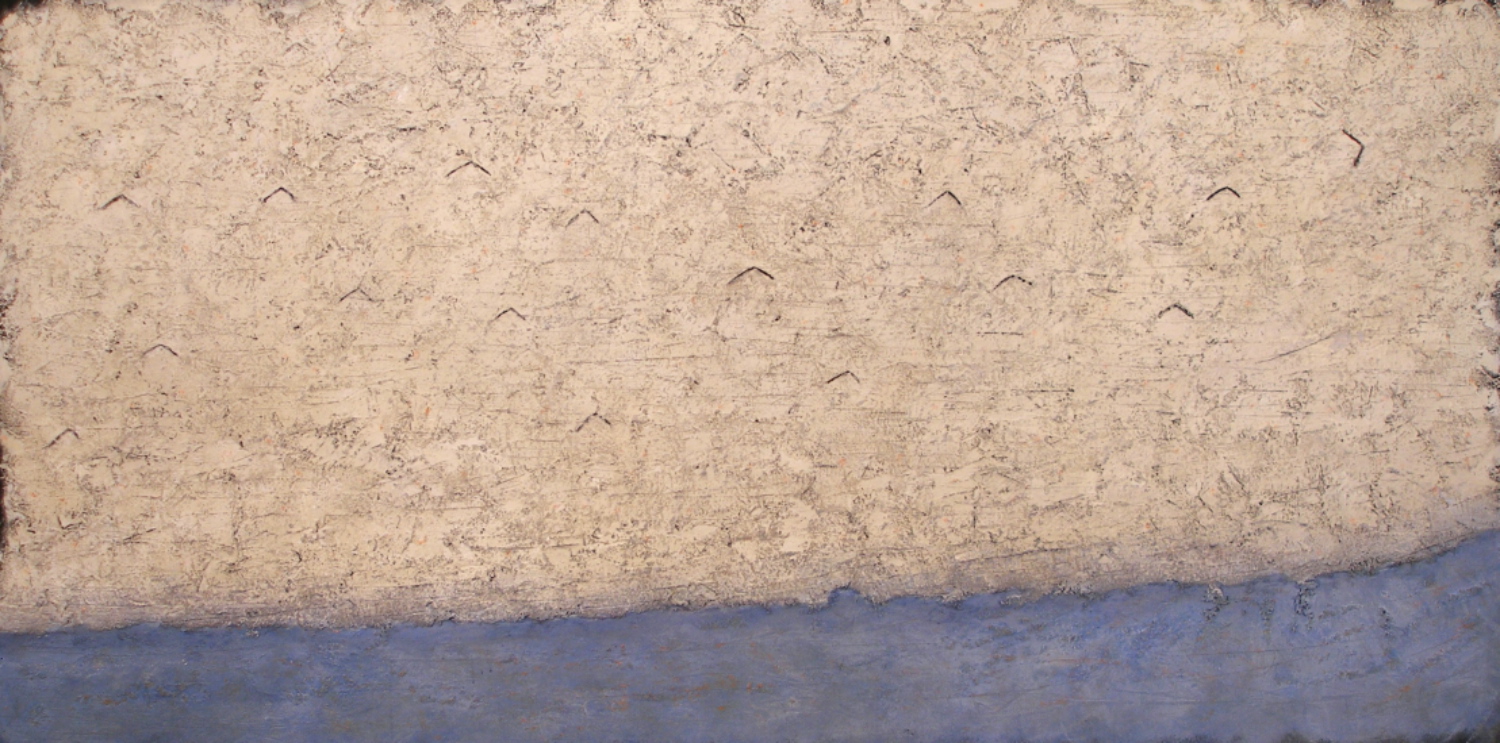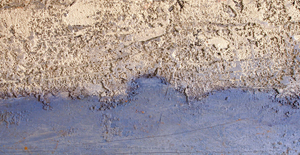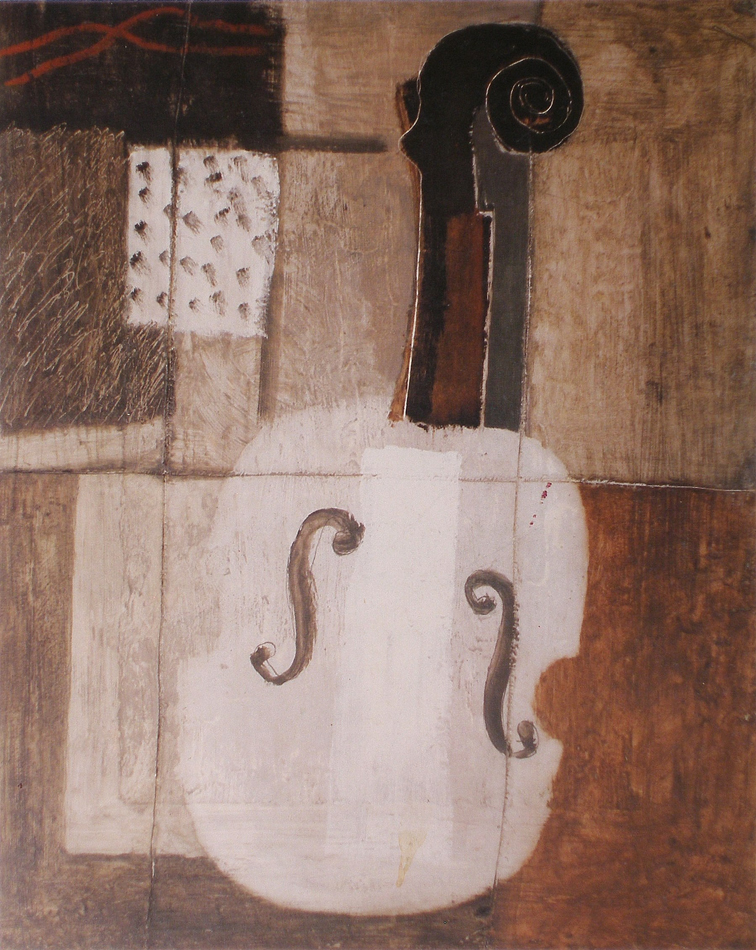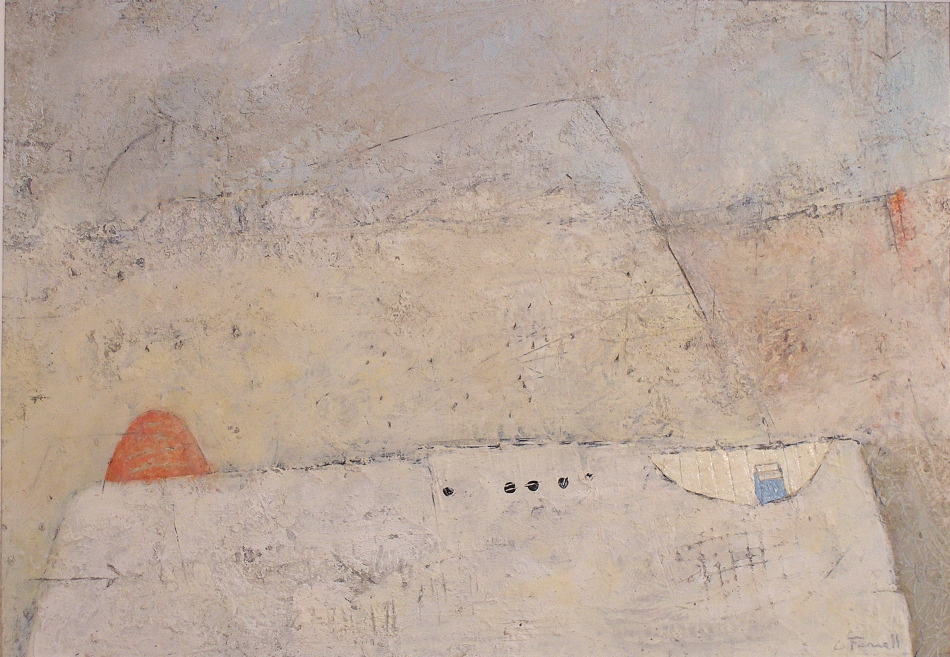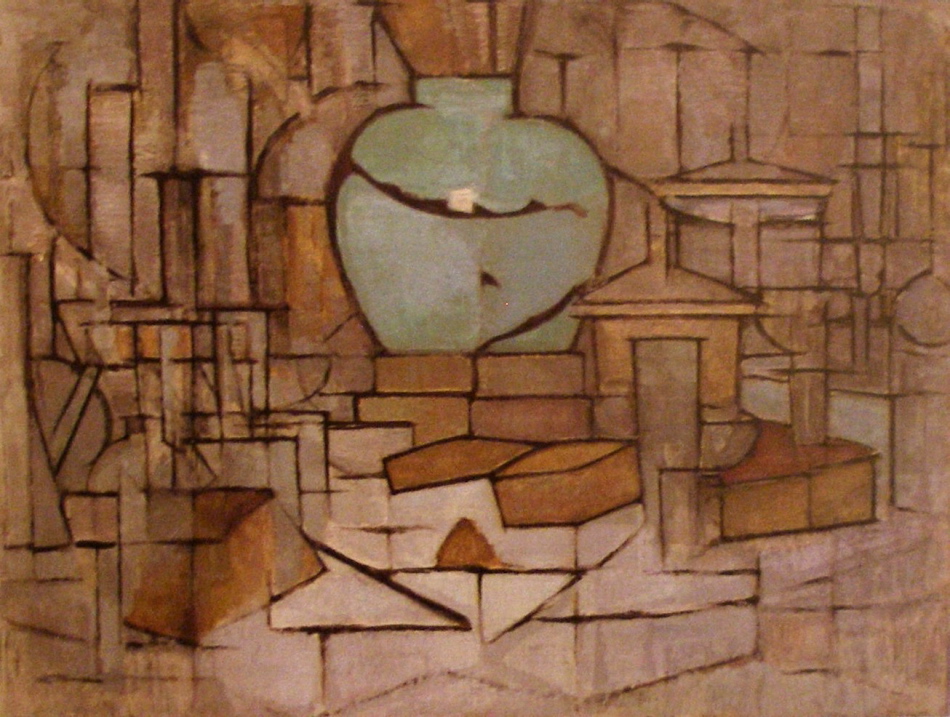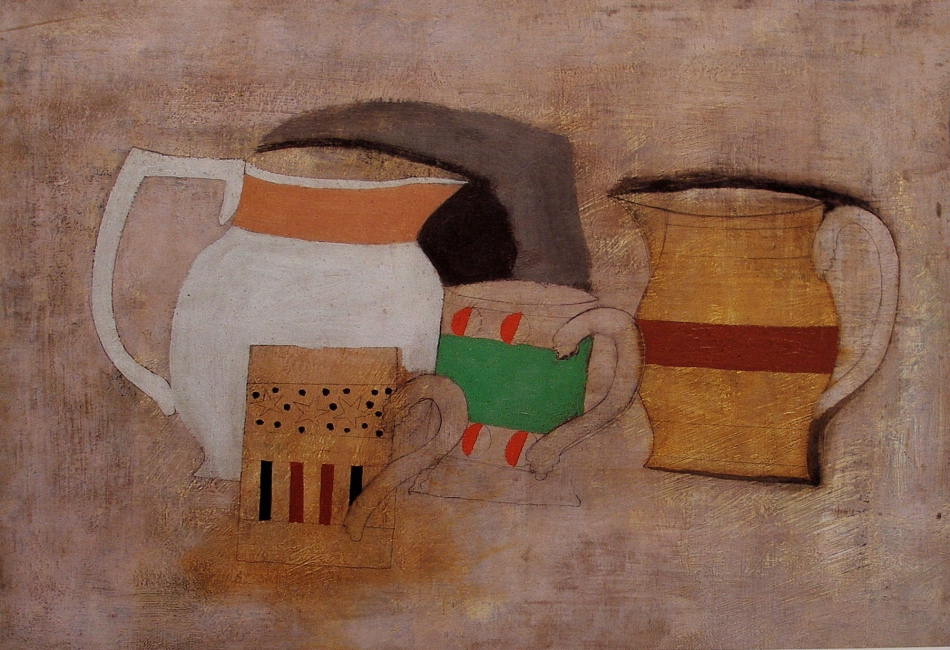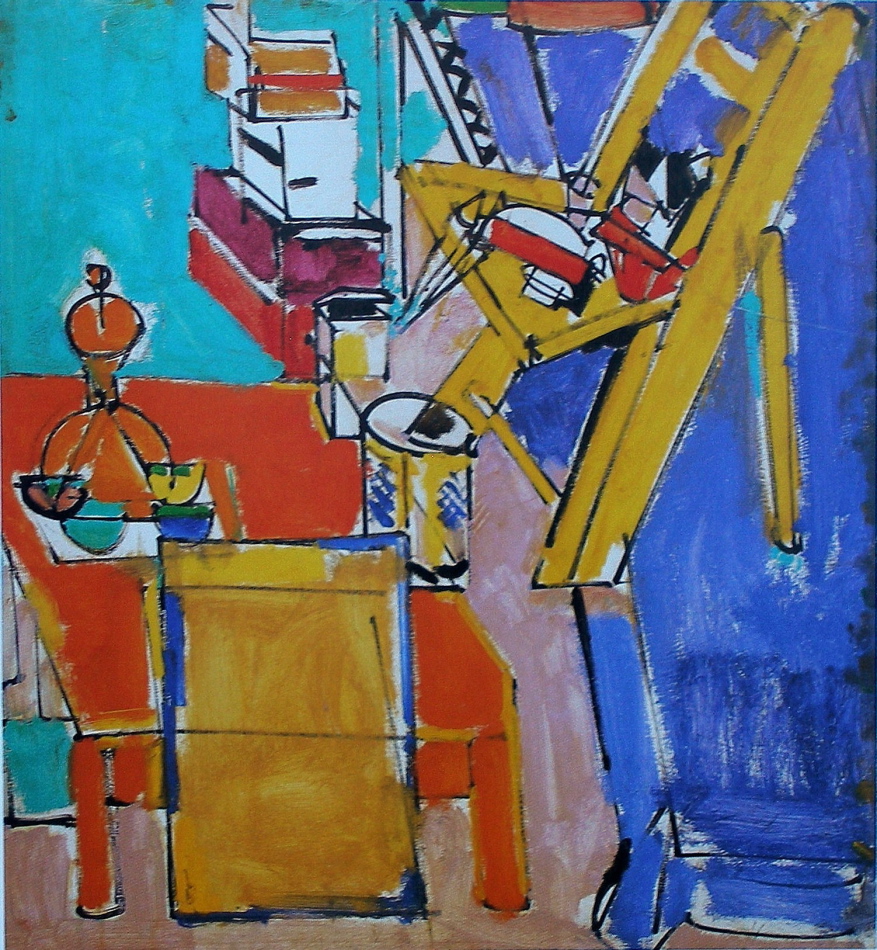This composition with my blue cup is a great example of reducing composition to an arrangement of shapes. This seemingly basic approach opens the door to wonderful spatial ad rhythmic considerations. The most important aspect of painting is the viewer’s engagement with how things relate, and one of the best ways to accomplish this is working with shape motifs.
This painting could be described as an arrangement of rectangles supported with a sub motif of ovals and a triangle. The challenge is orchestrating them, which usually calls for considerable reworking, until I “feel” their relationships. I become excited when this begins to happen and will stay with it no matter how many adjustments or refinements my sense of rhythm and harmony commands. I never tire of the process.
The primary relationship in this painting is between the cup and the rectangular pan. The distance, or space, between has an energy which is embraced by the table top and supported by the rhythmic arrangement of the small white sketches.
Now to the very important play with lines and markings on the table. I felt the ovals and half ovals needed rhythmic support. Can you see the curved lines and feel their influence with the ovals?
The four lines (detail) between the cup and the pan were instinctively placed to support the four sketches.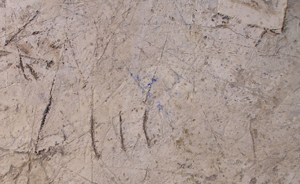 The triangle below was instinctively placed for a counter movement toward the sketches. There is also a small angle (detail) at the right which guides your eye back towards the sketches.
The triangle below was instinctively placed for a counter movement toward the sketches. There is also a small angle (detail) at the right which guides your eye back towards the sketches. 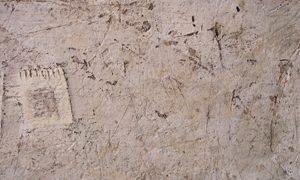
The balance of the painting supports the rectangle motif with the lines at the top harmonizing with the horizontals of the table, especially the front edge.
A very important connection is a small line on the wall, just above the left edge of the soaking pan. It carries you upward towards the strong white line carved into the painting. I spent considerable time determining the placement, weight and length to harmonize its relationship with the cup and pan. I also used the same consideration with the right edge of the cup and the edge of the white sketch above.
Striving to ensure every mark and shape have harmonious relationships and avoiding competition is the key.
If the shapes were not simple their relationships would not be felt as strongly.

